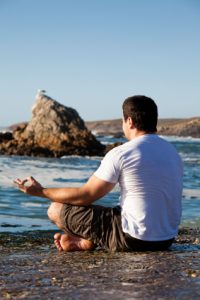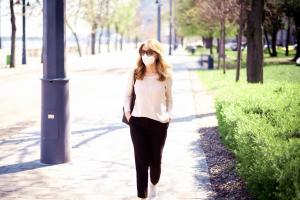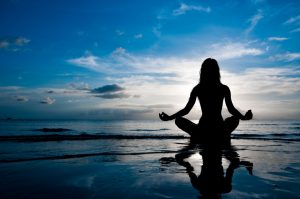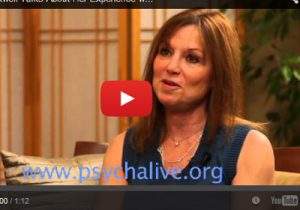Part II: Finding Calm in the Chaos
Using Everyday Life as a Gateway to Healing
Part II: Understanding the Elements of Mindfulness

Mindfulness: The Non Judgmental Awareness of the Present Moment.
In Part I we explored how to find more choice versus reaction in daily moments of stress, beginning with understanding the first element of Mindfulness: Non-Judgment
First Step for practice was learning how to inquire into our present experience with Curiosity to dampen our reflexive attitude of rejecting ourselves, another, or our circumstances. In cultivating Curiosity, we are learning to create the possibility of an openness toward our circumstances.
Moving on toward an understanding of the other elements of Mindfulness: Awareness and Present Moment
Awareness: Usually when in a stressful situation, we are aware, or focused on, what we don’t like about that situation, ourselves, or another. In Mindfulness, the challenge is to expand our awareness beyond the story, beyond our ideas, beyond our judgments, in a sense, giving more room for our experience. When our attention is narrowed, and our mind consumed by our evaluations, we can begin to feel very claustrophobic, propelling us into reactive states to fight or flee. It is the quality of our attention that requires our cultivation. We can be aware that the other guy is a jerk, or aware that once again we messed up, but Mindfulness holds a more generous quality of Awareness. This Awareness allows, accepts, attunes, approaches, and appreciates the entirety of experience. This all sounds quite nice on paper, but the actual practice of turning toward what hurts or irritates, requires great courage, which literally means “with heart”.This quality of Awareness is holding a context for experience with a very big heart. The space is opened to allow what is, (the content of experience), to be.
Think of our emotional reactions like wild horses, and our judgmental awareness like too small a paddock, with barbed wire and electrified fences. Those wild horses will buck and fight, or eventually shut down. But with the quality of Open Awareness, we create a context for exploration, opening the gates of constriction and expanding the paddock into a “field” of Awareness. In a larger field, there is more to be Aware of, decreasing our identity and focus on what is wrong. Moreover, within this larger context, movement occurs, we get unstuck, less fixated, less limited, allowing more options for response. Seeing our experience, or in this case, our emotions, our “ wild horses”, outside of the constraints of judgmental awareness , they can move freely, and if allowed to be as they are, they will shift, and our identity with them will diminish, illuminating that we are more than this momentary reaction.
Present Moment: When our judgments come rushing in, and our awareness becomes limited, most often we are being fueled by past experience, and/or, anticipation of the future. So much anxiety comes from our inability to Be in the Present. Thich Nhat Hanh, a Buddhist Teacher, has often stated that if we take care of the present moment, we take care of the future. Our lives are made up of many present moments all strung together. We often miss our lives completely lost in the past or anticipating the future. This is not some trite understanding, but at the heart of our suffering. We get caught in our regrets, or in our idea that once we achieve this or that, then we will be OK. We are either grasping at something, or pushing it away, creating a state of agitation, operating from a sense of insufficiency.
We now have all the elements of Mindfulness: Non-Judgmental Awareness of the Present Moment
Step 2: Working with the Quality of Awareness within the Present Moment.
Simplify your present moment by becoming aware of your five sensations. We often get lost in our heads, but if we can come back to what we see, hear, smell, taste, touch, we come back to the present. Once there, notice your immediate evaluations or judgments. You will like some things and feel aversion toward others. It is a natural tendency to try to secure our comfort, but this tendency limits our experience. Remember you are attempting to cultivate a quality of attention that might expand your capacity to allow, accept, attune, approach, and appreciate the totality of living.
You will have your “content” of experience, like what just happened to me while writing this: I hit a button on the computer and suddenly the screen went blank, and what I thought I saved was no longer available to me. My “content”, is my story, my sensations, my images, my thoughts, my emotions (our continual experience to return to, easy to remember acronym SITE: S=sensations, I=images, T=thoughts, E=emotions). Immediately, my heart raced, my stomach tightened, I was seeing the clock in my mind and all the time lost, I was thinking in expletives, and thinking I was certain that I saved my work, I felt anxious and angry! I was not a happy person, and certainly did not want this situation, but here it was. The reactive “context” would berate myself, or blame someone else, shutting down choice.
Shifting quality of Awareness allows availability to more possibility. I brought my focal attention to my breath, not changing it, but just becoming aware, I noted my thoughts and feelings of frustration, I did not suddenly become angelic and full of light heartedness, but through my practice, I could shift my attention, create a “context” of openness to the situation. I became aware of the sensation of wind coming through my window, the taste of the glass of cold lemonade I had on my desk, and by becoming present to sensation, I created more “space”, for the situation and my reactions.
This shift can be explained in neurobiology, and for now, if it helps you, the science shows in functional MRIs, that by “labeling” experience, we decrease the activation of the amygdala (within emotional center of the brain that registers fear), and with Mindfulness, we increase our Middle Pre Frontal Cortex functions, one of which is our ability to respond versus react. My response was to take a deep breath and begin again, and in fact, the experience allowed me to write from truth, to walk my talk, and helped me to write from the reality of experience versus abstract notions. (There was possibility in the pain).
The more you Practice Mindfulness, you can create states of openness, non reaction, non judgment, the ability to witness, label, describe your experience and increase your identity beyond thoughts and emotions, giving yourself a wide pasture in which to roam, where you can begin to choose your response to both your internal and external world.
 Diane Renz, a licensed psychotherapist, founder of Your Gateway to Healing, writer, workshop facilitator, utilizes both her academic background and personal experiences to explore how pain can become our possibility. She currently studies with Dr. Dan Siegel integrating the latest scientific understandings on neuroscience and Mindfulness within her work. For more information feel free to visit www.yourgatewaytohealing.com.
Diane Renz, a licensed psychotherapist, founder of Your Gateway to Healing, writer, workshop facilitator, utilizes both her academic background and personal experiences to explore how pain can become our possibility. She currently studies with Dr. Dan Siegel integrating the latest scientific understandings on neuroscience and Mindfulness within her work. For more information feel free to visit www.yourgatewaytohealing.com.
© 2011 Your Gateway to Healing™, Diane Renz, LPC.
To read more from this author, visit her bio page.
Tags: lifetime healing, mental health, mindfulness








Leave a Reply
You must be logged in to post a comment.